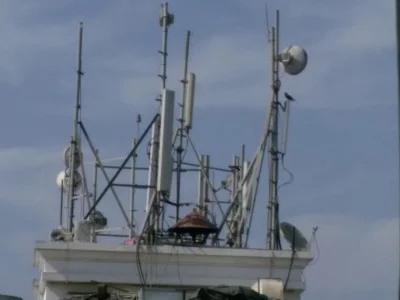 Department of Telecommunications (DOT) has rejected the proposal of Telecom Regulatory Authority of India (TRAI) to create extended-GSM by splitting the 800 MHz CDMA spectrum. DOT will decide the price of the 800 MHz band in the next telecom commission meeting scheduled on November 7. TRAI's proposal to create e-GSM band was strongly opposed by the CDMA and dual technology operators, but was heavily backed by GSM players. Lets take a look at how this would impact Indian mobile segment.
Department of Telecommunications (DOT) has rejected the proposal of Telecom Regulatory Authority of India (TRAI) to create extended-GSM by splitting the 800 MHz CDMA spectrum. DOT will decide the price of the 800 MHz band in the next telecom commission meeting scheduled on November 7. TRAI's proposal to create e-GSM band was strongly opposed by the CDMA and dual technology operators, but was heavily backed by GSM players. Lets take a look at how this would impact Indian mobile segment.
What is e-GSM?
E-GSM stands for extended GSM band in the 900 MHz range which overlaps with the 800 MHz band. Extended GSM includes the standard GSM 900 band (GSM-P) with an addition of 10 MHz at the lower side of the primary GSM 900 MHz band. This extension ranges from 880-890 MHz. Most modern phones with GSM 900 also support e-GSM.
What does this mean to the CDMA players?
This will be a great relief to the CMDA operators as this move will ensure there will be enough spectrum for them. As per CDMA operators, they have invested billions in building CDMA infrastructure in the country and any move to make e-GSM will grossly undermine their business case
How will this impact the GSM operators?
E-GSM band would have added additional 10 MHz to the 900 MHz GSM band. So GSM operators would have had more 900 MHz spectrum to bid for. Most operator's 900 MHz license is going to expire in 2015-2016 and they will have to win it back in the next auction. Recently Airtel, Idea, Vodafone and Reliance had written a letter to the telecom minister and prime minister to postpone the next auction till enough spectrum is available.
900 MHz is the most efficient spectrum in the GSM band as it provides strongest coverage compared to the 1800 MHz GSM band. GSM operators could also deploy 3G service over this band as with Idea in Delhi which plans to offer 3G service over 900 MHz spectrum they had won back in February.
How will this affect consumers?
For CDMA users this would mean that CDMA operators MTS, Reliance and Docomo will be able to purchase additional spectrum to expand their service and further improve Rev B EVDO speeds with additional carrier frequency.
For GSM users, e-GSM would have created an additional 10 MHz which would have meant at least two more operators having 900 MHz spectrum. Currently only BSNL/MTNL and two or three private operators have 900 MHz spectrum in each circle. Additional operators would have brought the total tally of operators to 5 or 6 in the 900 MHz range. They could have launched 3G in the 900 MHz, which would have provided twice the coverage than the current 3G in the 2100 MHz.















